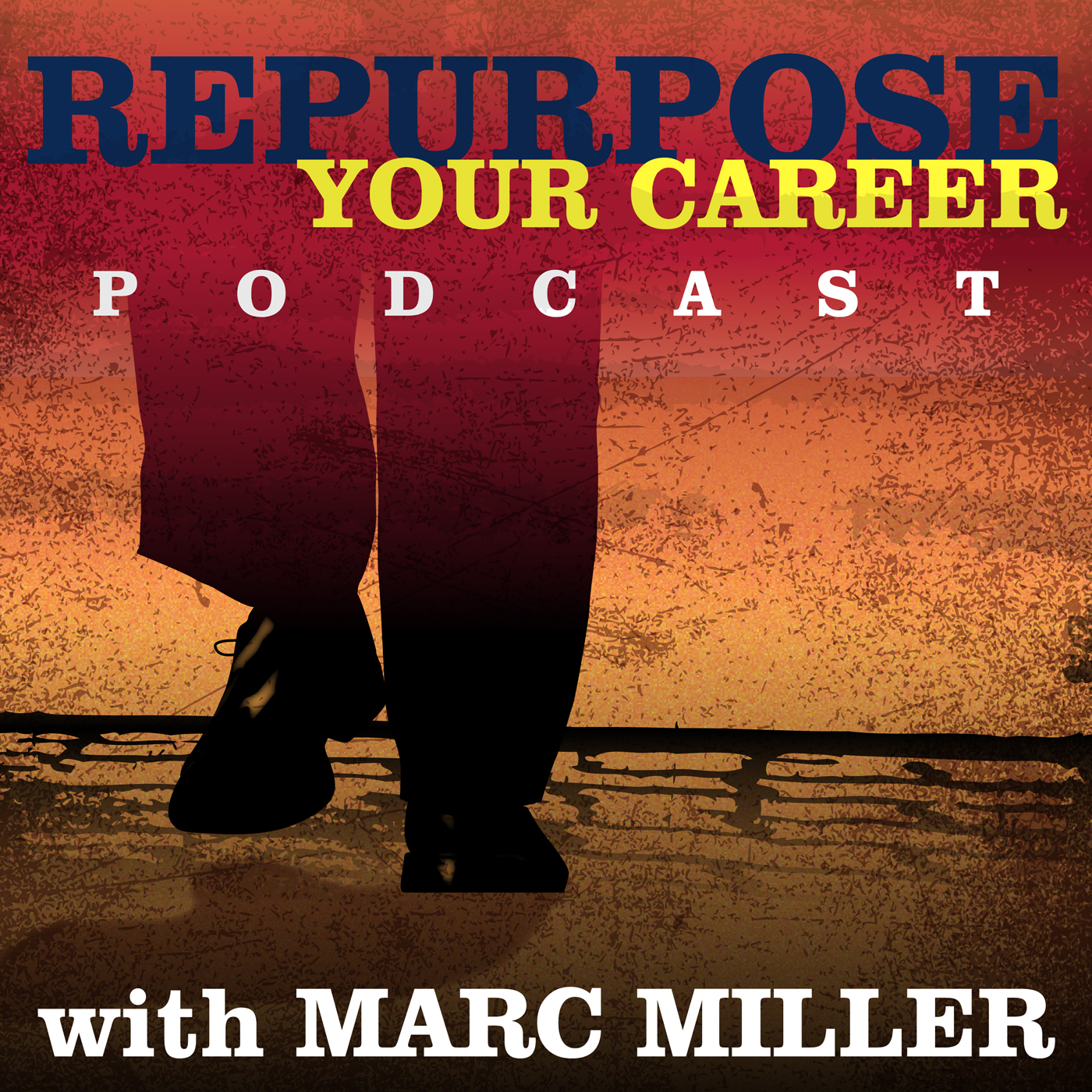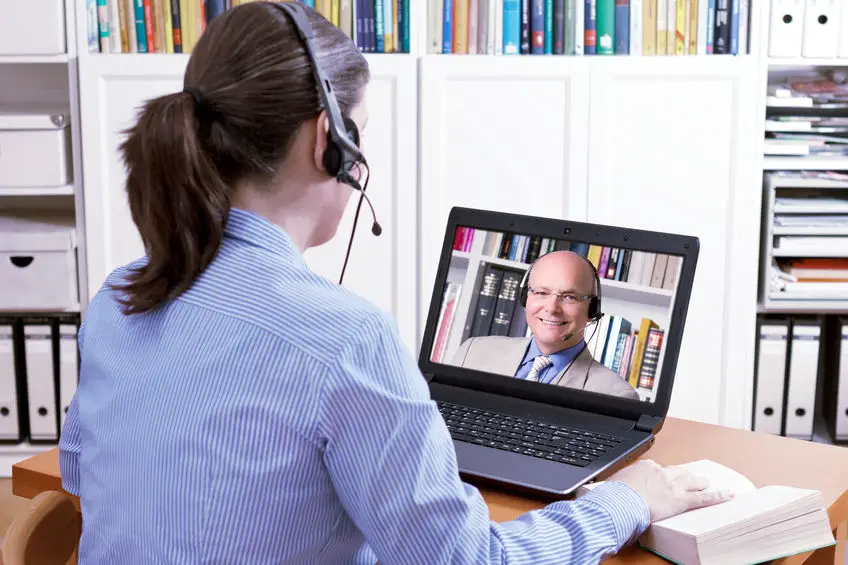Video Interview
With the COVID-19 pandemic, you will be asked to video interview rather than interview in person.
These interviews are usually conducted via Skype, Zoom, or WebEx. There are new automated platforms like HireVue that will make video interviews with robots even more common.
The key to a successful video interview with a human or a robot is to look and, more importantly, sound your best.
Even though you might think that having a really good video is paramount, it is more important to have high-quality audio. The audio quality is more important than the video.
Let me take you through the 4 ingredients of a winning video interview environment.
Note: This post was originally published in April of 2014 and was updated in May of 2020.
Room Selection
The room environment where you will be interviewed is key. You want good, consistent lighting and excellent acoustics. Pick a room that is devoid of hard surfaces (like tile or wood floors), glass tabletops, or lots of windows. It should also have carpeting and possibly drapes on the walls.
Hard surfaces distort the audio by causing the sound waves to reflect and creating a tinny audio effect. This can be quite annoying to the interviewer and will detract from your interview performance.
When I record my podcasts, I am in my master bedroom closet where the hanging clothes create a studio-like audio environment. You probably cannot hold a video interview in your closet, but you get the point. You will want to position yourself in the room where you are less than six feet from a wall. If your webcam has an autofocus feature you will want the camera to focus on you and not something behind you. A little trick is to buy a simple room divider with smooth paper surfaces and place it behind you.
Listen to the most recent episode


Marc Miller
Discover the Perfect Destination for Your Retirement or Remote Work Abroad #337
If you select the right room for your video interview everything else becomes so much easier.
If the only room available to you is a room like mine, which is a concrete bunker, then go to the “Audio” section of this post.
Lighting
You want full-spectrum lighting on the front of your face. If you are in an office, the lighting will be from above; this creates a shadow under your chin. This is the 10 pounds we seem to gain on video.
If you are at home, much of the artificial lighting will be from the side as most home lights are designed to put light on working surfaces. You may have natural lighting and most of the time it will come from the side and light up half of you.
Natural lighting is problematic in that it changes throughout the day and changes due to weather conditions. What looks good one day when you are practicing interviewing may look dark during the actual interview.
It is best to use simple lighting for your interviews. I would start by purchasing two inexpensive desk lamps and install full-spectrum light bulbs. This is a very inexpensive solution.
The cost of LED lighting has come down so much that a professional light kit like the one I bought can be had for about $140.
These lights will act as key lights and give you even lighting. Place these pointing up at your face on the left and right. Finally, close all of the window shades. Do not spend more than $150 on the lighting. You may already have the lamps in your house or office. I would invest in some good LED or fluorescent full spectrum light bulbs.
You could also purchase a ring light that is intended for taking selfies like this one.
Audio
In the world of high definition video, your audio is more important than your video. Our tolerance for poor audio is much lower than for video. You will want to sound great.
If you have picked the room properly, with sound-deadening materials, this is fairly easy. Use a set of headphones with a built-in microphone. These could be the earbuds from your cell phone. You can run the wire underneath the back of your shirt so they do not show. This will eliminate any chance of an echo.
What if you do not have access to a room with good acoustics?
If this is your situation, select a high-quality microphone that plugs directly into your computer. I prefer to use a USB condenser microphone. I use an Audio-Technica ATR2100-USB Cardioid Dynamic USB Microphone that I purchased with a pop filter for less than $75 a few years ago. Another popular microphone is the Samson Q2U USB/XLR Dynamic Microphone.
Audio gear has come down in price significantly in the last 10 years. It is definitely worth the money to spend a little on a high-quality microphone.
Note: During the COVID-19 pandemic some of the prices have spiked and not all of these devices may be available.
Clothing, Body and Camera Positioning
Pick clothes that have color and look good on you. For most of us guys, we will need to ask for help. Avoid patterns on shirts, jackets, and ties. The cameras have gotten a lot better at dealing with patterns, but it is still best to avoid them.
It is best to be standing up when being interviewed. You will be able to use your hands naturally. Most of us will be more energetic when standing versus sitting. Your diaphragm will also be able to expand more easily, giving you a more powerful tone.
Elevate the computer so that the camera is at the same level as the top of your head. You might need to get some boxes or books and put your computer on top to get it to the correct level. I use multiple milk crates on top of my desk to raise my computer high enough for my 6’4″ frame.
Foot Comfort is Key
Since you will only be on video from the waist up, wear shoes that will not generate any noise when you move around. Flip flops work great. I personally go without shoes and stand on a gel mat. You want to be extremely comfortable so that you will not move around. I naturally rock from one foot to the other if I am nervous or not comfortable. Having my bare feet sink into the gel mat is very comforting.
The most important feature is to be in an environment where you feel comfortable. You are on stage and you want to give your best performance. Much has been written on how to perform during a video interview.
Bonus tip – tape a picture of a person to your computer so their head is directly above your camera. When you speak, look at that picture as this will simulate making eye contact with the interviewer.
A great performance can come across poorly without the right environment.
As you can see, this is not hard. You just need to do some planning.
What do you plan to do for your next video interview?
Like What Your Read? Get Career Pivot Insights
Do You Need Help With ...

Check out our Help Center where you have access to 14 different content portals.



This is pretty comprehensive advice! I shudder when I think back to my first interviews. I got the room selection correct, but I had natural lighting, computer microphone audio, and a horrid sitting position. I had never thought to buy equipment to improve the interviewing experience, and since a possible job offer is one the line, I should probably get some.
I always find that looking directly into the webcam helps connect with your interviewer. It may be awkward looking there instead of the screen, but eye contract is important in all kinds of interviews.
How would you suggest emotionally preparing for an interview? Everything in the room may be perfect, but there’s probably some body language or facial expressions that may emit confidence.
Noah,
Read the following post for preparing.
https://careerpivot.com/2014/3-steps-walking-interview-confidence/
Marc thank you for the update on audio video equipment to stay looking good visually attractive obviously not your age. Yeah I did get upgraded equipment with smartphone and planning to buy USB professional mic on Amazon for $45 equal value to the Audio Technica. Awesome idea to stand-up over sitting down be moving over sedentary. I cannot emphasize how important you look on video to how you view sound to others on video and uh and even your surroundings if there’s a noise distraction or doesn’t look uh appropriate that could also be a deciding factor.